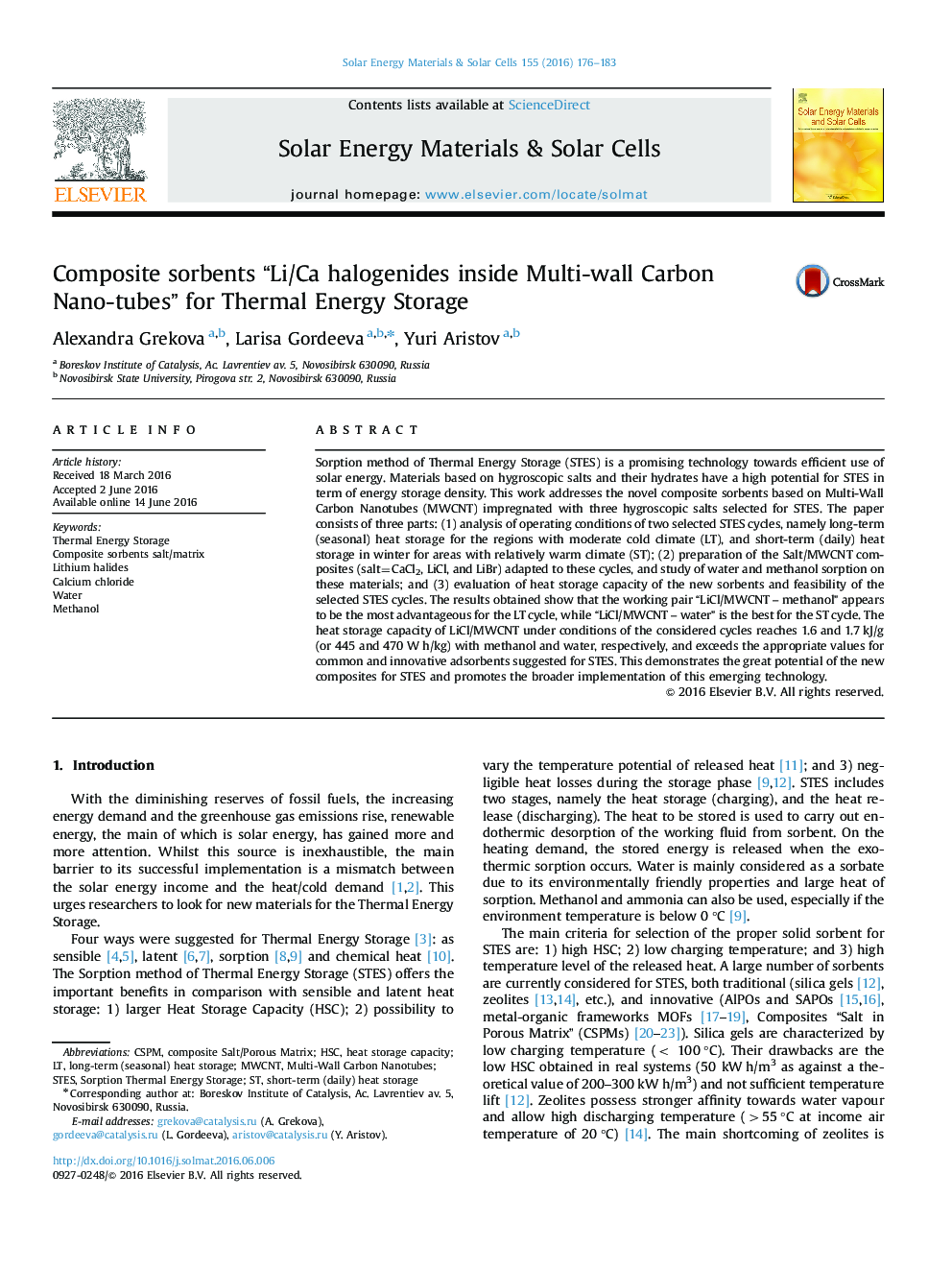| Article ID | Journal | Published Year | Pages | File Type |
|---|---|---|---|---|
| 77503 | Solar Energy Materials and Solar Cells | 2016 | 8 Pages |
•Novel composites “salt/MWCNT” were intently prepared for sorption heat storage.•Conditions of long-term (LT) and short-term (ST) heat storage cycles are analyzed.•Sorption equilibrium of the composites with water and methanol vapour is studied.•LiCl/MWCNT-water and LiCl/MWCNT-methanol are the best pairs for the ST and LT cycles.•A heat storage capacity of LiCl/MWCNT of 1.7 kJ/g is superior to common adsorbents.
Sorption method of Thermal Energy Storage (STES) is a promising technology towards efficient use of solar energy. Materials based on hygroscopic salts and their hydrates have a high potential for STES in term of energy storage density. This work addresses the novel composite sorbents based on Multi-Wall Carbon Nanotubes (MWCNT) impregnated with three hygroscopic salts selected for STES. The paper consists of three parts: (1) analysis of operating conditions of two selected STES cycles, namely long-term (seasonal) heat storage for the regions with moderate cold climate (LT), and short-term (daily) heat storage in winter for areas with relatively warm climate (ST); (2) preparation of the Salt/MWCNT composites (salt=CaCl2, LiCl, and LiBr) adapted to these cycles, and study of water and methanol sorption on these materials; and (3) evaluation of heat storage capacity of the new sorbents and feasibility of the selected STES cycles. The results obtained show that the working pair “LiCl/MWCNT – methanol” appears to be the most advantageous for the LT cycle, while “LiCl/MWCNT – water” is the best for the ST cycle. The heat storage capacity of LiCl/MWCNT under conditions of the considered cycles reaches 1.6 and 1.7 kJ/g (or 445 and 470 W h/kg) with methanol and water, respectively, and exceeds the appropriate values for common and innovative adsorbents suggested for STES. This demonstrates the great potential of the new composites for STES and promotes the broader implementation of this emerging technology.
Graphical abstractFigure optionsDownload full-size imageDownload as PowerPoint slide
